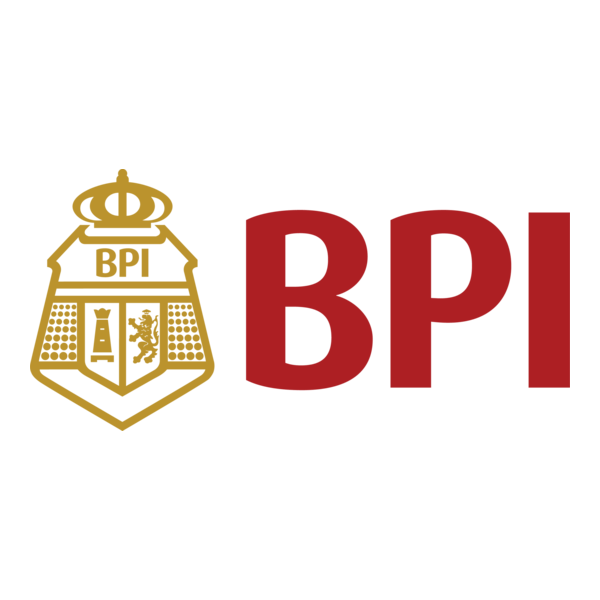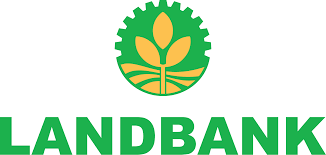Most Filipino households face income variability and rising living costs, often relying on short-term borrowing or credit card use to bridge gaps between paydays. Without a clear plan, these small balances can quietly accumulate into high-cost debt that erodes savings and long-term goals. A structured financial roadmap helps reduce dependence on expensive credit, strengthens day-to-day stability, and protects progress toward milestones like education, home ownership, or retirement. Begin by building an accessible emergency reserve (see Emergency fund below) and follow a step-by-step framework for budgeting, protection, debt reduction, and goal-aligned investing.

Why a Practical Plan Matters Now
A financial plan turns intention into repeatable actions that produce measurable results. It creates short‑term stability while clarifying trade‑offs for medium and long‑term goals such as home ownership, education, or retirement. Planning reduces the need for expensive credit during shocks and produces documentation lenders and advisers use to evaluate options.
1. Budgeting — the decision baseline
Start with a documented monthly account of net income and fixed versus variable expenses. Use payslips, invoices, or remittance records rather than rough estimates. Divide income into clear buckets: essentials, financial goals, protection, and discretionary spending. Use a familiar rule (for example, 50/30/20) as a starting point and adapt it to local costs and household priorities.
Track recurring payments (rent, utilities, loan amortizations, subscriptions) and review the budget monthly. Small, consistent adjustments—shifting one subscription or trimming one discretionary category—create visible changes over a quarter.
2. Emergency fund — protect short‑term stability
An accessible emergency reserve reduces the likelihood of turning to high‑cost borrowing when unexpected expenses occur. Choose a target that reflects household income stability and responsibilities.
Build the fund with automated transfers to a liquid account and treat those transfers as non‑negotiable. Keep simple, dated records of contributions; verifiable progress strengthens loan conversations and supports personal discipline.

3. Protection — cover key risks
Protection reduces the financial impact of major shocks. Prioritise health coverage for all household members and term life insurance for primary earners. Compare PhilHealth entitlements with private plans to fill gaps efficiently. For property or business owners, evaluate cost‑effective riders only when they address a clear exposure.
Store policy documents and contact details in one accessible place. Clear documentation and nominated beneficiaries prevent costly delays for family members during claims.
4. Debt strategy — reduce cost and exposure
List liabilities with interest rates, minimum payments, and remaining tenure. Prioritise reducing high‑interest unsecured debt first. Aim to cut principal, not just service interest.
Practical approaches:
- Apply extra payments to the highest APR accounts while keeping minimums elsewhere.
- Consolidate or refinance only when monthly amortization falls and total fees are reasonable.
- Negotiate with creditors for temporary plans if facing temporary cash‑flow stress.
- Avoid new instalment plans (BNPL, merchant schemes) while executing a debt reduction plan.
Document negotiation outcomes and revised schedules with screenshots or written confirmations.

5. Investing — match horizon and risk
Match instruments to each goal’s timeline and your documented risk tolerance. Start with small, regular contributions and increase them as debt burdens fall and reserves grow.
Suggested mapping:
- Short term (1–3 years): high‑yield savings, time deposits, short bond funds.
- Medium/long term (3+ years): mutual funds, UITFs, index funds, and peso‑cost averaging into equities.
Always check fees, lock‑in terms, and tax implications. Maintain transaction records and fund statements for annual reviews and potential underwriting needs.
6. Retirement and estate basics
Factor in employer plans, SSS, and personal retirement accounts when calculating retirement corpus. Revisit assumptions every two to three years. Prepare a simple estate note listing bank accounts, insurance policies, and beneficiaries to ease transitions and reduce disputes.

Review Cadence and Tools
Schedule quarterly reviews for budgeting and rebalancing and an annual audit for taxes and insurance renewals. Use bank statements and a concise spreadsheet or a reputable budgeting app to track progress. Store key documents digitally with secure backups and retain dated records for ITR filing or loan applications.
Practical example — small consistent steps
Anna, 28, automated ₱3,000 monthly into a liquid emergency account and allocated ₱2,000 extra to reduce a credit card balance. After six months she had one month’s essential expenses saved and reduced the card balance by 25 percent. With a reserve in place, she started a ₱1,000 monthly mutual fund contribution for a three‑year travel goal. Each documented change made future budgeting and lending conversations simpler and quicker.

Quick One‑Page Checklist
- Record net monthly income and essential expenses using verifiable documents.
- Automate a monthly emergency fund transfer.
- List all debts with rates and apply extra payments to the highest‑rate balances.
- Verify insurance coverage and address one immediate gap.
- Start a small, regular investment aligned to a specific goal.
- Schedule quarterly reviews and one annual full audit.
Implementation notes for Filipino households
- OFWs: use consistent remittance records as documented income.
- Include Pag‑IBIG and SSS considerations when mapping housing and retirement plans to avoid duplicated coverage or missed benefits.
- Prioritise liquidity in early stages; avoid illiquid investments until reserves reach target levels.
- For complex tax or estate matters, consult a licensed adviser and keep written summaries of any formal advice.


Conclusion
Meaningful financial improvement comes from consistent, documented actions: a working budget, an accessible emergency fund, targeted protection, disciplined debt reduction, and goal-matched investing. Progress need not be rapid; measurable, verifiable steps build momentum and reduce dependence on costly credit. For trusted guidance, calculators, and tools that help Filipinos plan smarter and borrow better, visit Finmerkado, your partner in building financial confidence one practical step at a time.
Frequently Asked Questions
Begin financial planning for Filipinos by documenting your net monthly income and essential expenses. Create a simple budget that separates essentials, savings (including an emergency fund), protection, and discretionary spending. Use payslips, invoices, or remittance records to verify figures and schedule a quarterly review.
For emergency funds in the Philippines, target three months of essential expenses for single, stable earners; three to six months for dual‑income households; and six to twelve months for freelancers or irregular income. Automate monthly transfers to a liquid account and record contributions for verifiable progress.
A practical budgeting method for Filipino households is a simple allocation framework (for example, 50/30/20) adapted to local costs. Track recurring payments, document income sources, and adjust categories monthly to reflect changes in rent, utilities, and loan amortizations.
Prioritise health coverage for every household member and term life insurance for primary earners when planning protection in the Philippines. Compare PhilHealth benefits with private health plans to identify and fill gaps cost‑effectively.
Freelancers should average income over 6–12 months and keep ITRs, invoices, bank statements, and contracts as proof. This documented income supports budgeting, loan applications, and realistic saving and investment plans.
Prioritise liquidity and high‑interest debt reduction first. Once a starter emergency fund exists and high‑APR obligations are under control, begin small, regular investments aligned with specific time horizons and documented goals.
Conduct a short review every quarter to adjust budgets and reallocate priorities, and perform a full annual audit for taxes, insurance renewals, and long‑term retirement planning.
Include Pag‑IBIG and SSS benefits when calculating housing affordability and retirement needs to avoid duplicated coverage or missed entitlements. Verify contribution history and documented benefits during your annual review.
Consult a licensed adviser for complex tax planning, estate matters, or large financial decisions. Keep written summaries of formal advice and any documents provided for future reference.
The simplest immediate step is to record verifiable net income and essential expenses, then automate a modest monthly transfer to an emergency fund. Small, consistent actions create momentum toward larger goals.
Metrobank M Free Card

- NO annual fee for life
- NO minimum spent requirement
- Worldwide acceptance 0% installment programs
- Exclusive Promotions and Offers
- Ideal for those looking to maximize financial control and convenience
RCBC Gold Mastercard

- Earn flexible non-expiring Rewards Points from all your purchases
- Enjoy complimentary travel insurance and purchase protection on all your trips
- Free budget monitoring tools to help organize your finances
- Convenient and rewarding bills payment
- Ideal for savvy spenders and travelers
Security Bank Platinum Mastercard

- Waived annual fee for the first year
- Earn 2 never-expiring point for every ₱20 spent
- Access over 1,300 lounges across 500+ airports worldwide
- Free travel insurance when booking airline tickets
- Discounts at favorite shops and restaurants
- Receive up to $200 coverage when you shop online
- Ideal for frequent travelers and international shoppers
BPI Personal Loan

Need a cash boost for life’s big moments or unexpected emergencies? The BPI Personal Loan offers a reliable and flexible solution—whether you’re funding a small business, covering tuition, or consolidating debt. With competitive rates, fixed monthly payments, and a fast approval process, this loan is designed to fit your goals and your lifestyle. No collateral required, just straightforward access to funds when you need them most.
BDO Unibank Personal Loan

BDO Unibank’s Personal Loan offers unsecured financing of up to ₱2 million with a fully digital or branch-assisted application process. It’s an accessible cash option for immediate needs like debt consolidation, travel, events, and other lifestyle expenses. With competitive rates starting at 0.98% monthly add-on and flexible repayment up to 36 months, it’s a solid choice for salaried and self-employed individuals.
Maya Personal Loan

Want a personal loan that’s 100% mobile and super convenient? The Maya Personal Loan is built for the digital lifestyle, no paperwork, no long lines. With just your Maya app, you can apply, get approved, and manage your loan. Whether it’s for bills, tuition, or a financial cushion, Maya’s fully digital loan service puts speed and flexibility right in your hands.













